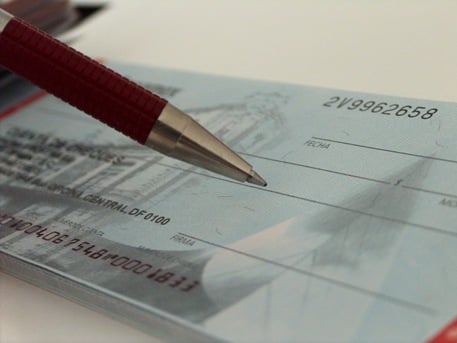Yield-seekers take note: a survey by Bankrate found dozens of financial instutions that offer accounts with extremely high interest rates. And no, they're not jumbos.
Consumers may earn as much as 6 percent on certain U.S. checking accounts, a Bankrate.com survey found.
The so-called high-yield checking accounts earned an average 2.56 percent compared with 3.3 percent last year, Bankrate.com said today.
“It's a slam dunk,” for savers who can meet the requirements, said Greg McBride, senior financial analyst at Bankrate.com, a unit of Bankrate Inc. “It's an easy way to raise the yield on some of the cash portion of your portfolio.”
To earn the top interest rate, consumers generally must meet monthly requirements such as one direct deposit or automated payment and 10 debit-card transactions, according to the study. The required debit-card purchases are the “biggest hurdle,” for consumers, McBride said. Savers who don't meet the requirements in a given month earn an average of 0.11 percent, he said.
Banks also generally limit the balances in a checking account that earn the highest yield. The most common cap is $25,000, while others set it at $10,000 or less, McBride said. The highest yield found in the survey was 6.17 percent on up to $500, from Boeing Employees' Credit Union in Seattle, with excess balances receiving a rate of 0.1 percent, he said.
Bankrate, based in North Palm Beach, Florida, surveyed 155 banks and credit unions in May and found 57 high-yield accounts, of which 27 were available to consumers nationwide. While the average interest rate has declined, it's still higher than the earnings from money-market funds and traditional checking and savings accounts, McBride said.
Debit-Card Caps
Top-yielding nationally available savings accounts yield 1.1 percent and the average traditional checking accounts earn 0.07 percent, Bankrate.com data show. The seven-day compound yield of the average taxable money fund was 0.02 percent during the week ended June 14, according to IMoneyNet Inc., a research firm based in Westborough, Massachusetts.
High-yield checking accounts are offered predominantly by smaller community banks and credit unions, McBride said. Banks offering nationally available checking-account yields of more than 3 percent include Ouachita Independent Bank in Louisiana, BankTexas in Texas, Danversbank in Massachusetts and Atlantic Coast Bank in Florida and Georgia.
The Federal Reserve in December proposed capping debit-card swipe fees charged to merchants at 12 cents a transaction, replacing a formula that averages 1.14 percent of the purchase price. The caps, scheduled to take effect July 21, won't apply to banks and credit unions with less than $10 billion in assets.
Routine Purchases
Banks may increase the number of required debit-card transactions in order to earn the higher yield because of the debit-card reforms, McBride said. High-yield checking accounts often have no monthly fees or balance requirements, and may refund ATM fees.
To maximize the higher interest on these checking accounts, consumers should hit their required debit-card transactions each month through routine purchases such as lunch or gas expenses and not deplete the balance in large numbers, said McBride.
“If you're earning the higher rate of interest you probably don't want to be pulling money out,” McBride said.
Bankrate Inc. is an online publisher of consumer interest- rate information. The company had its first day of trading on June 17 after its initial public offering.
--Bloomberg News--







